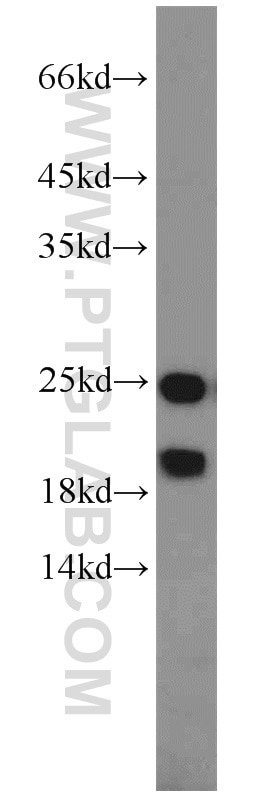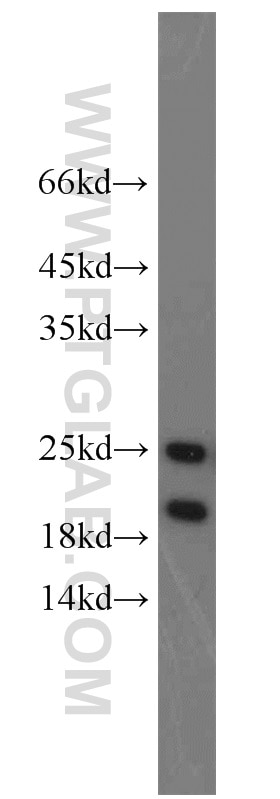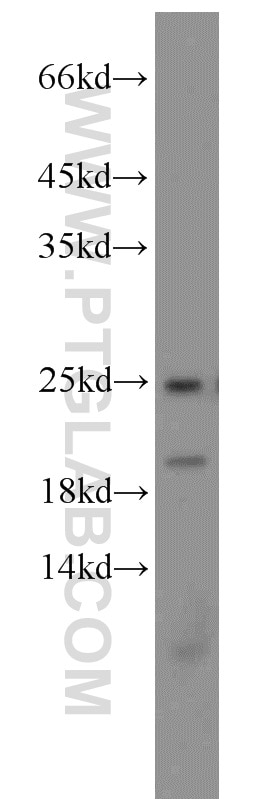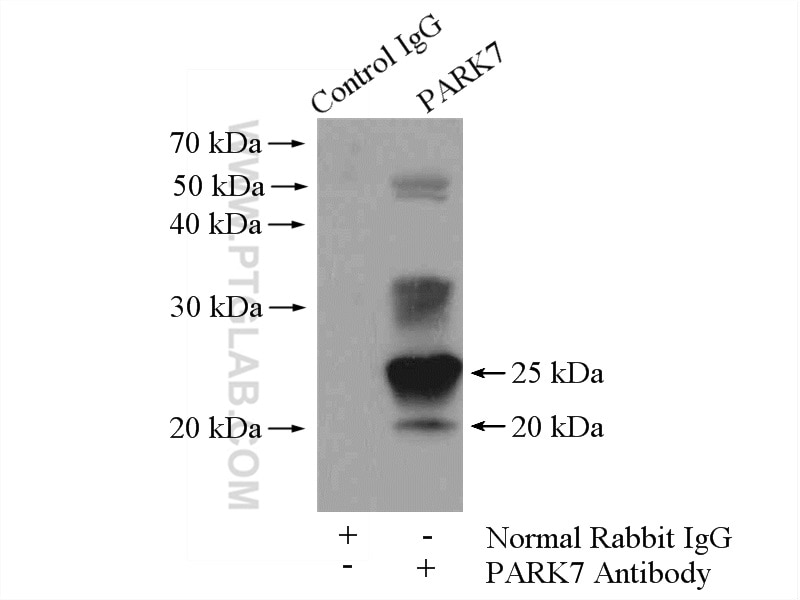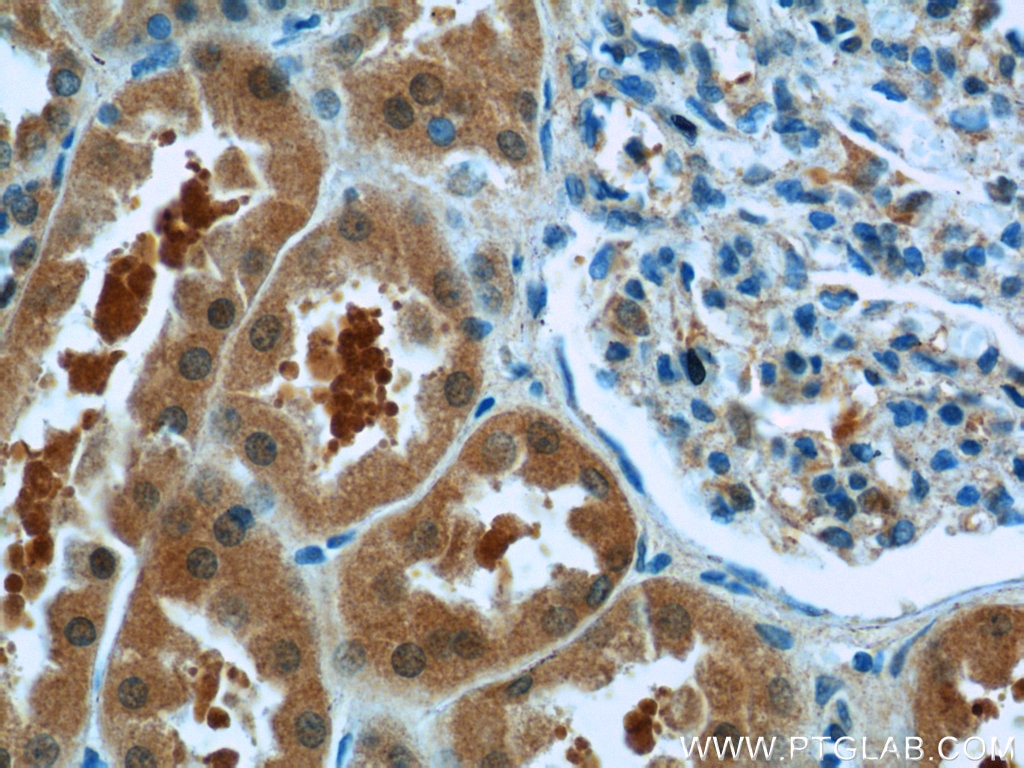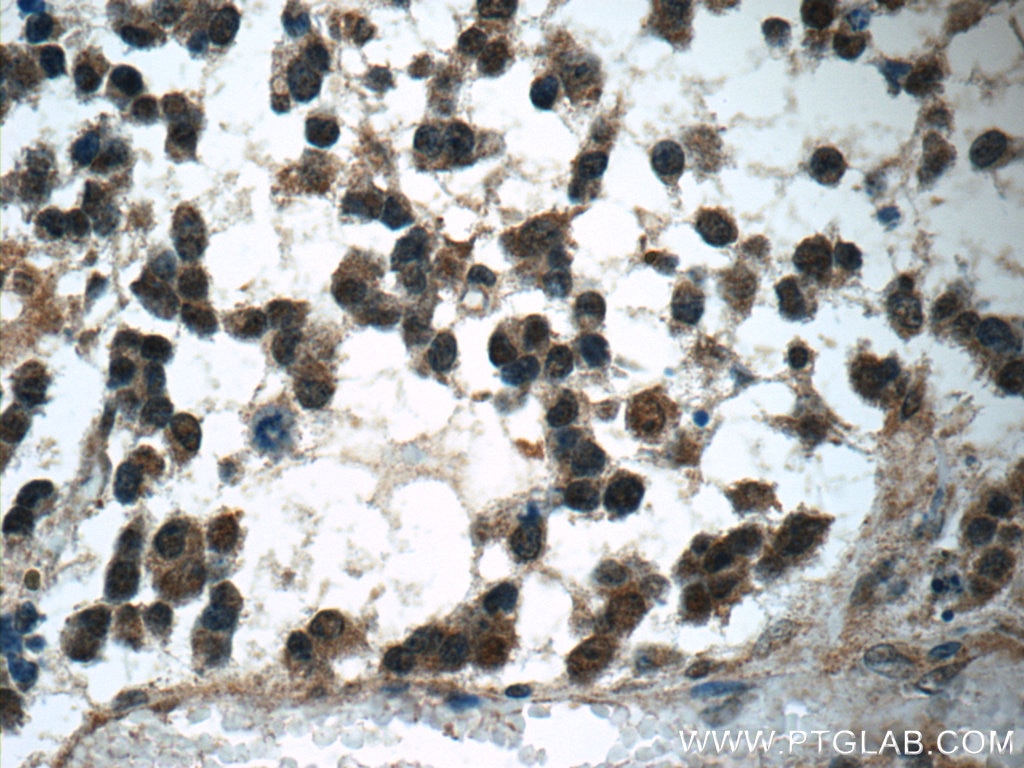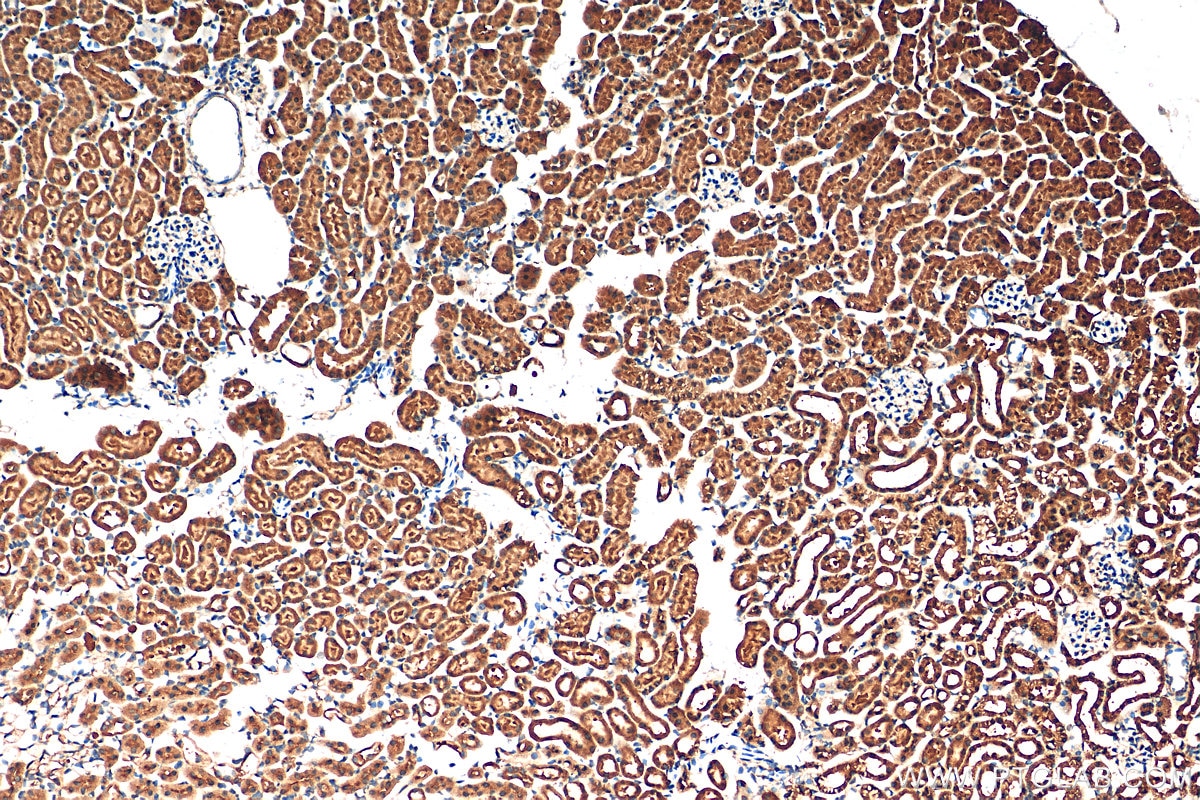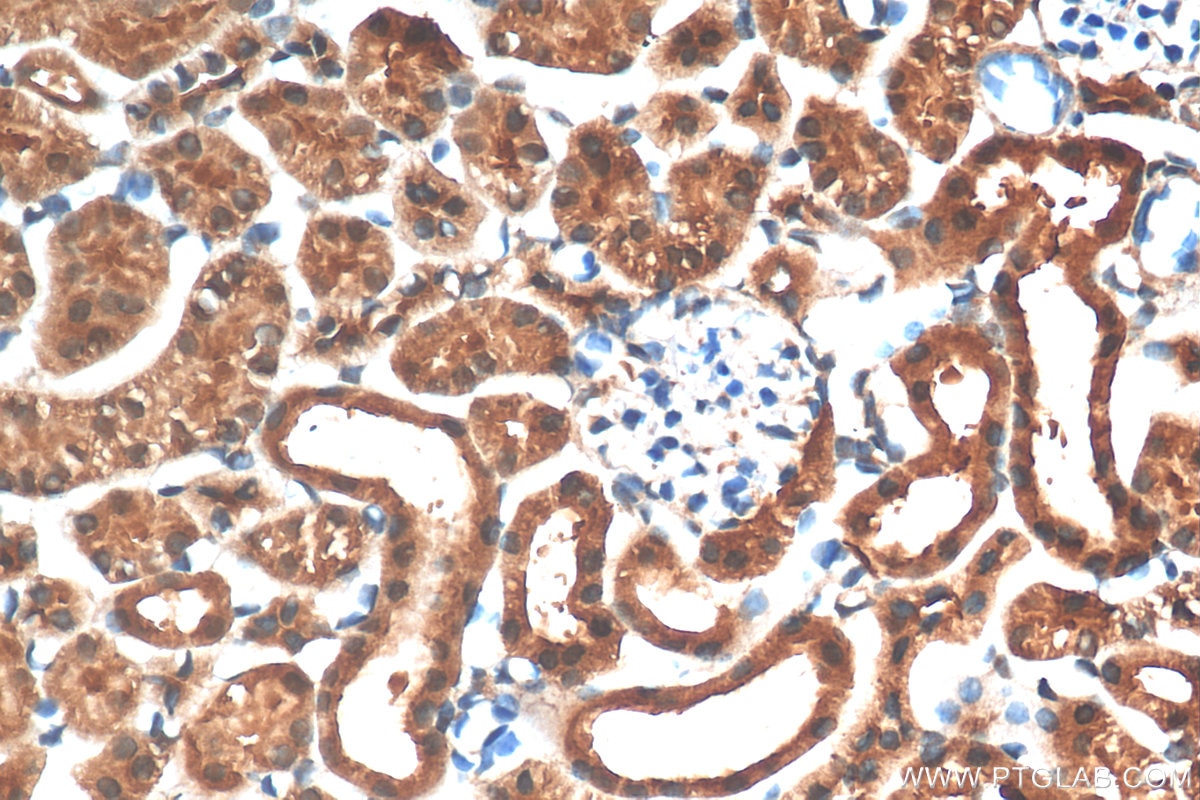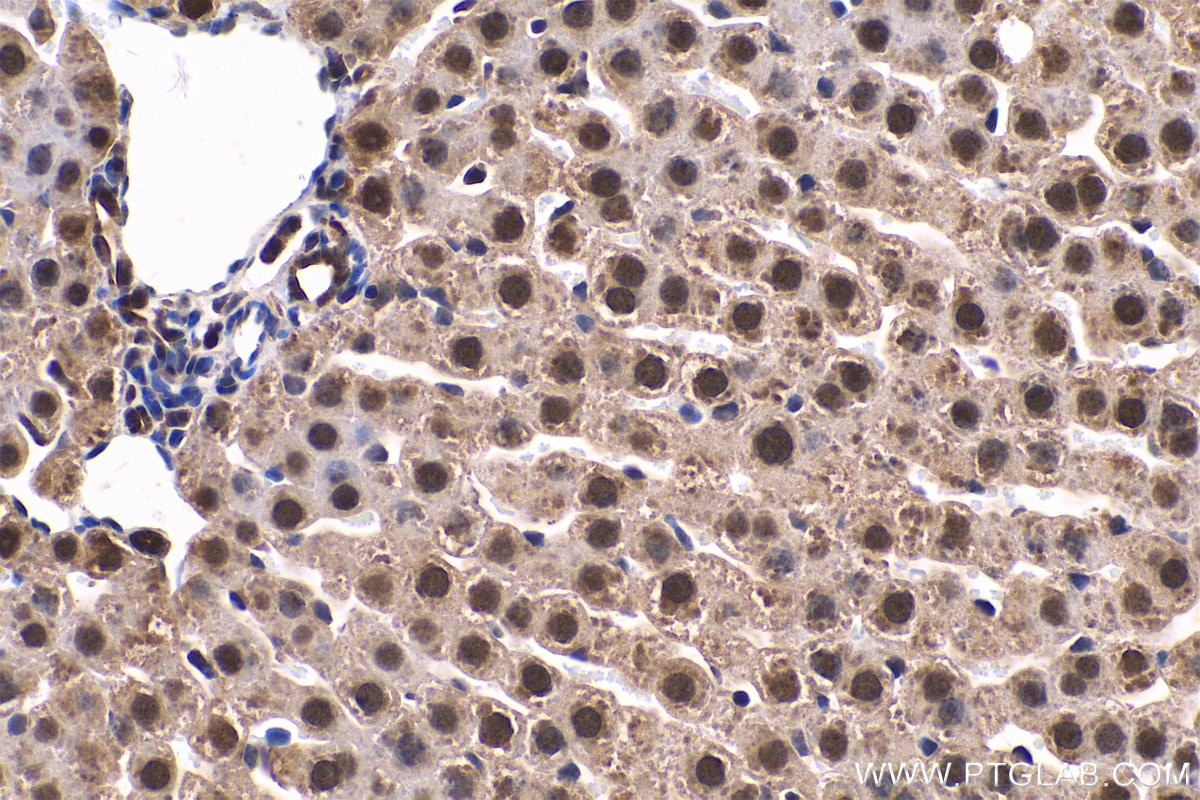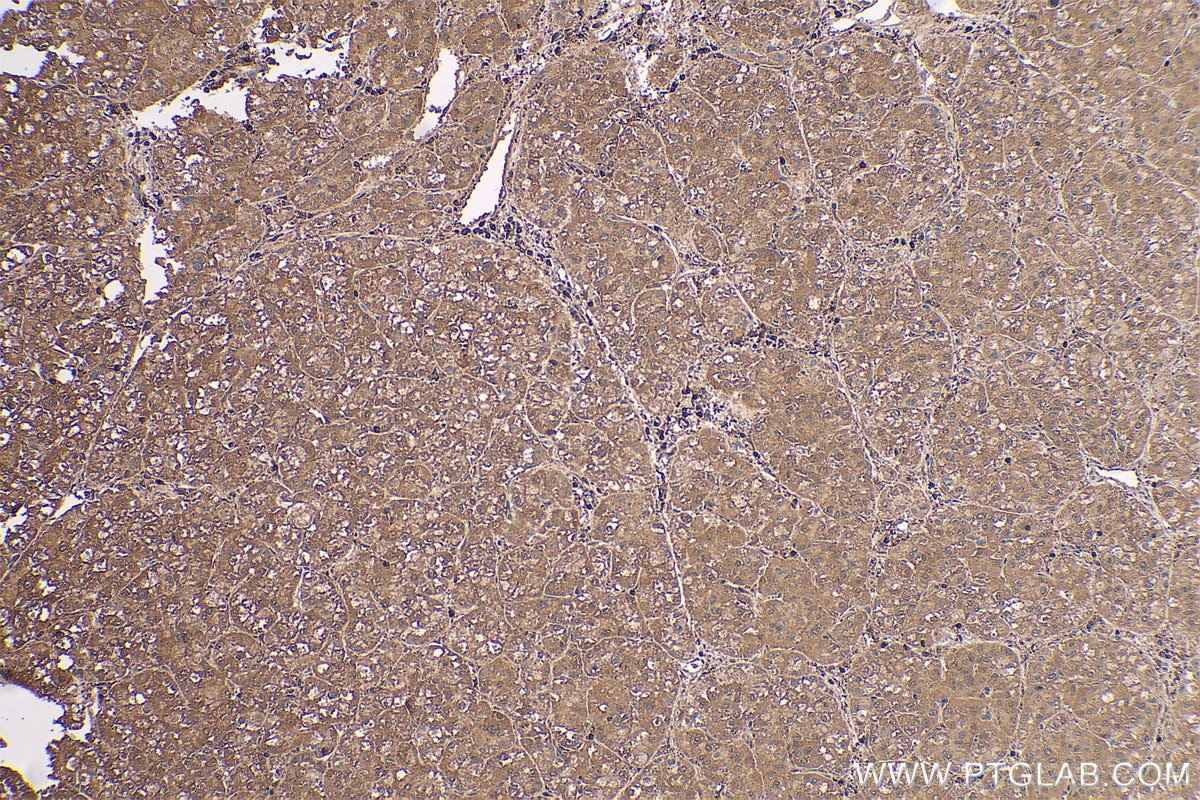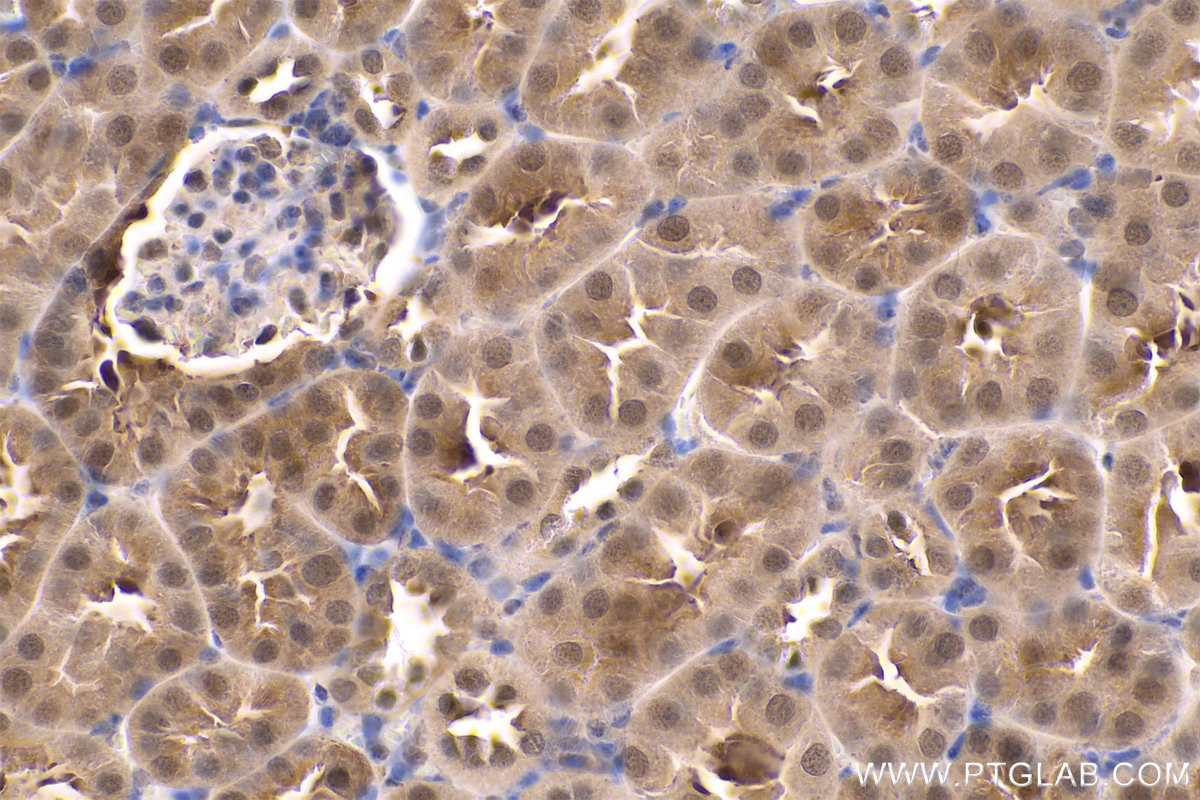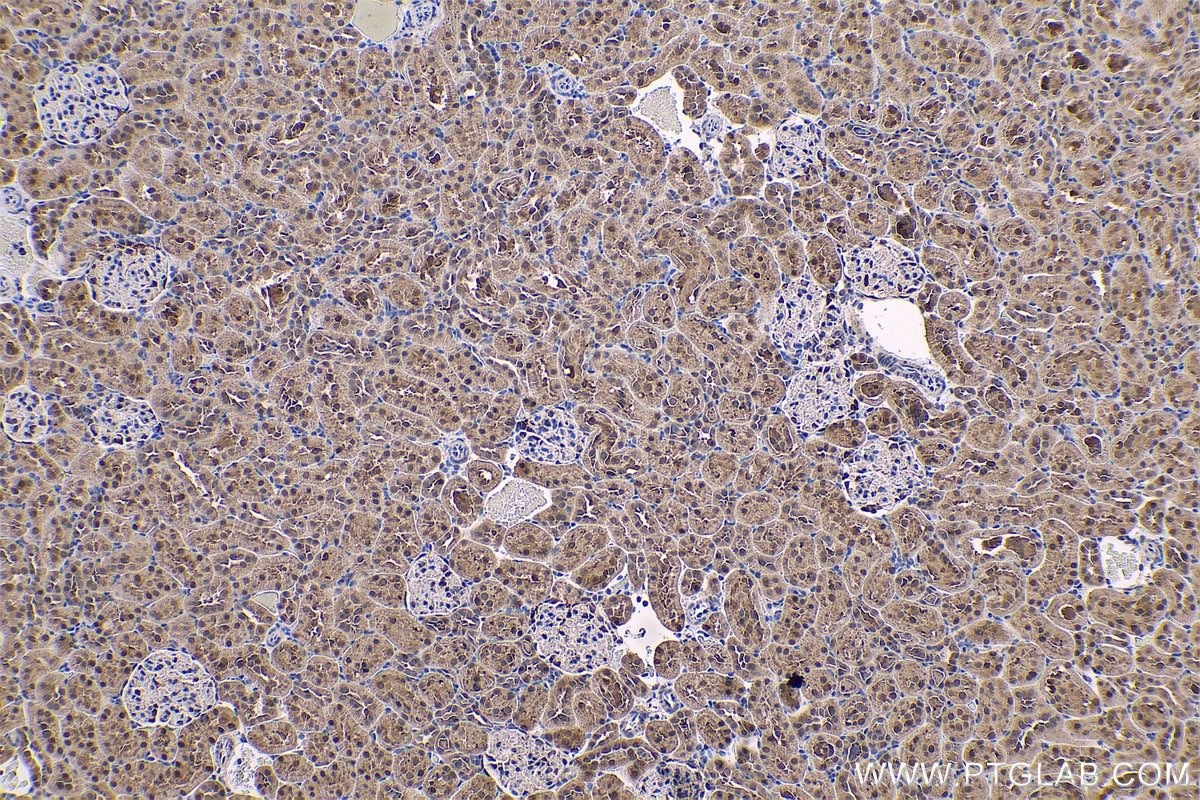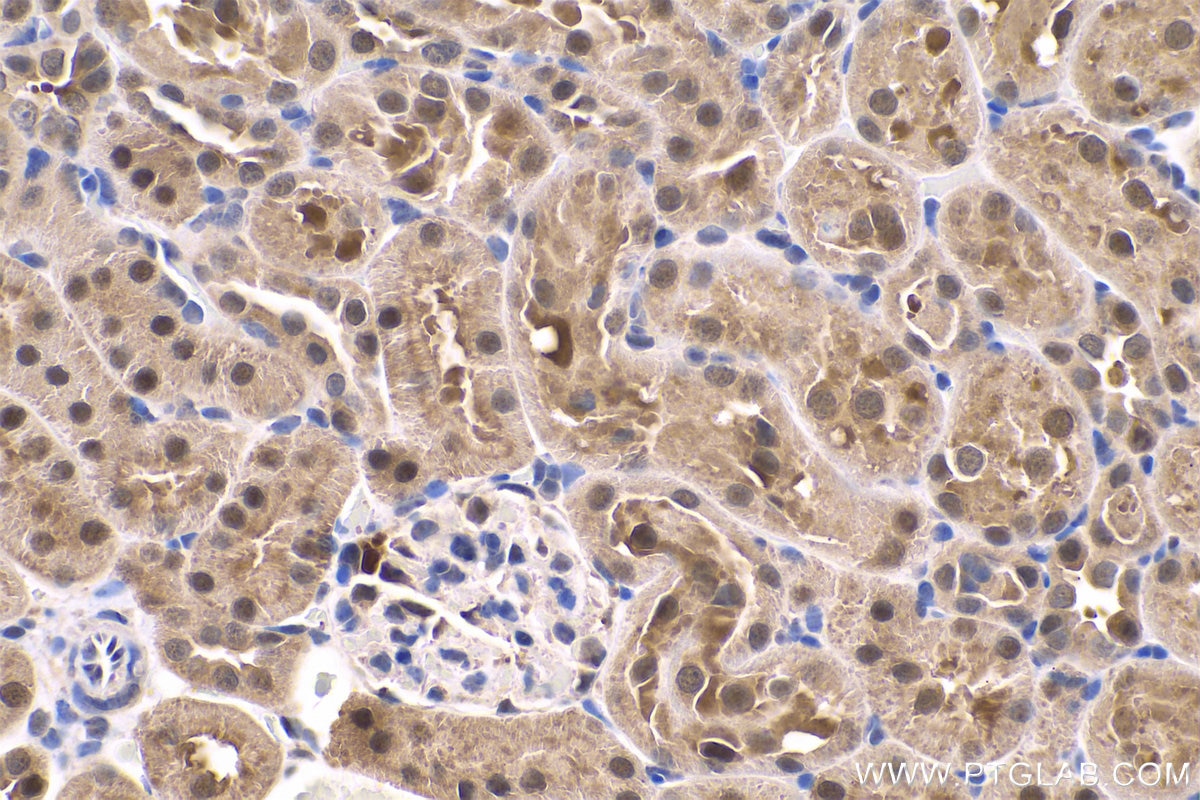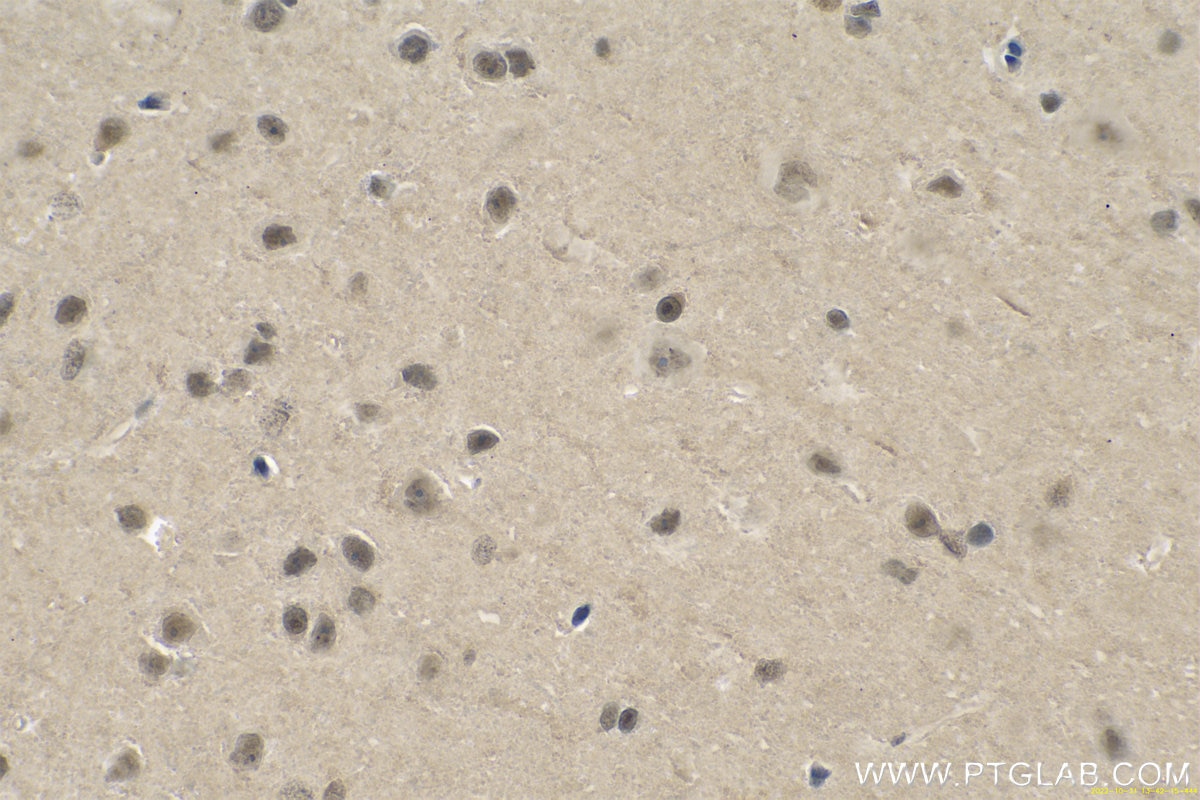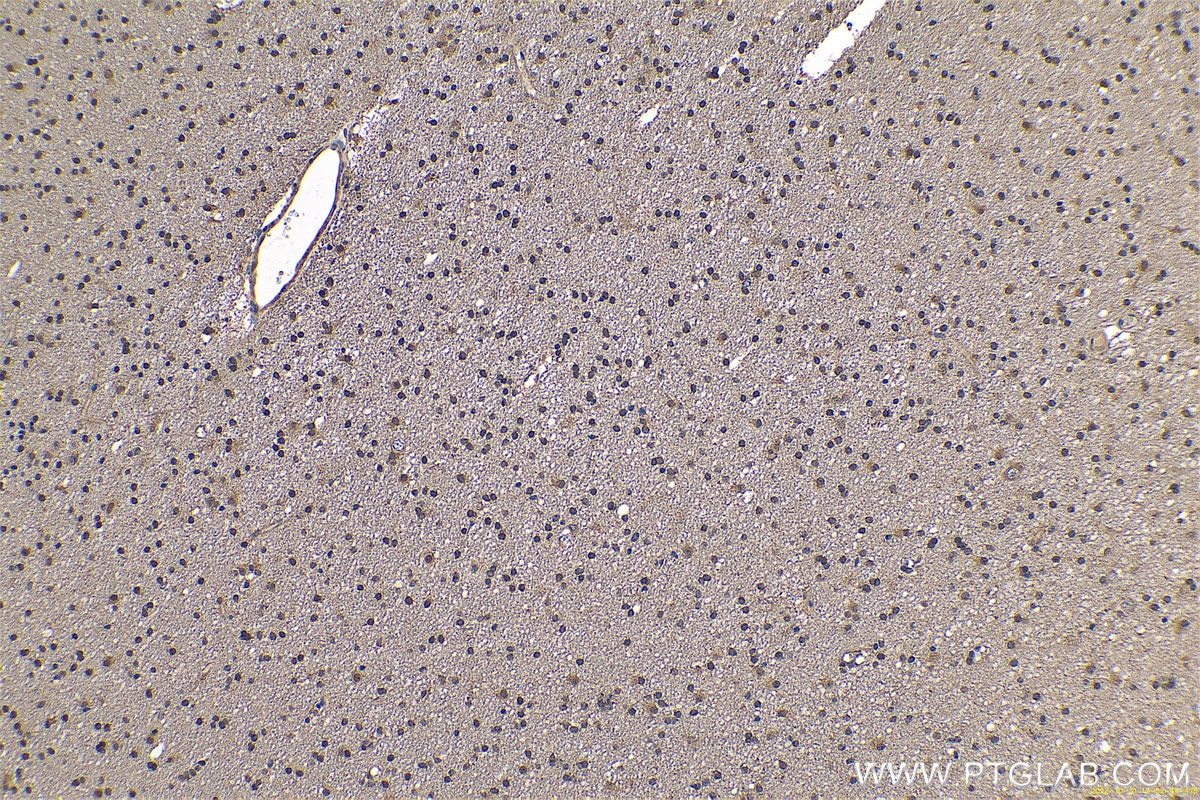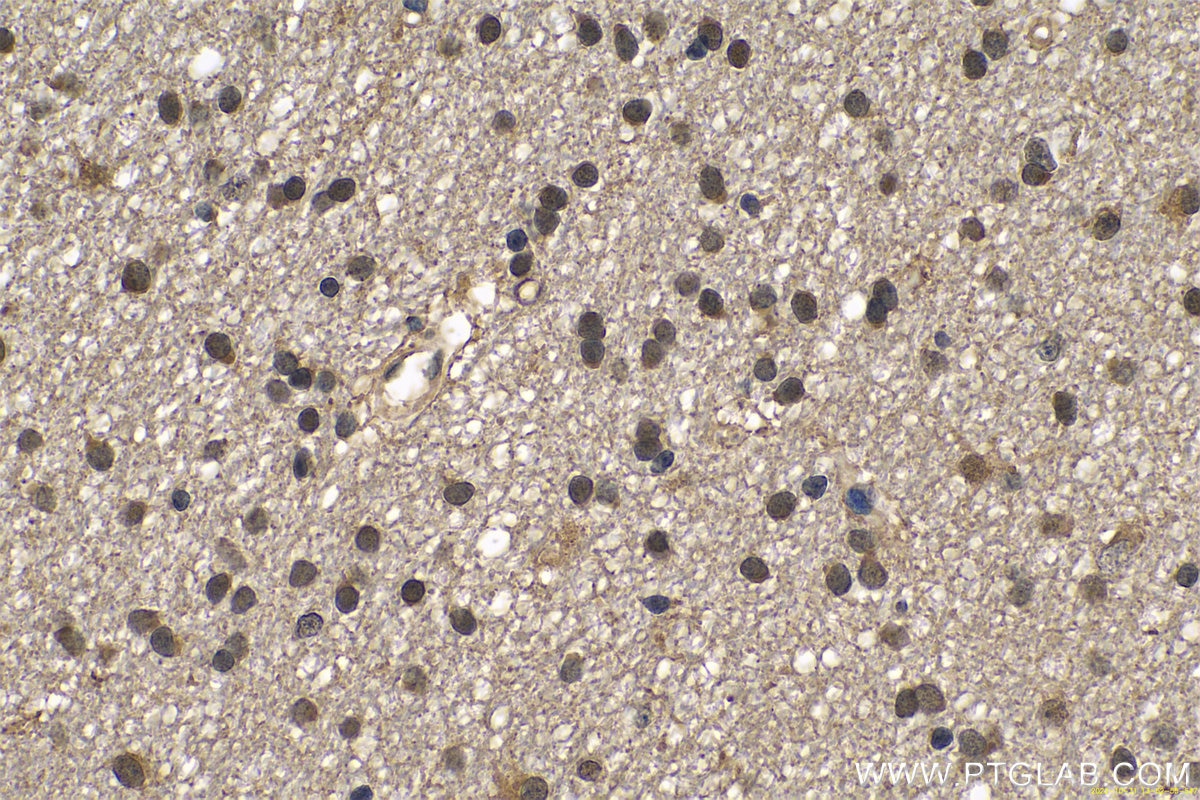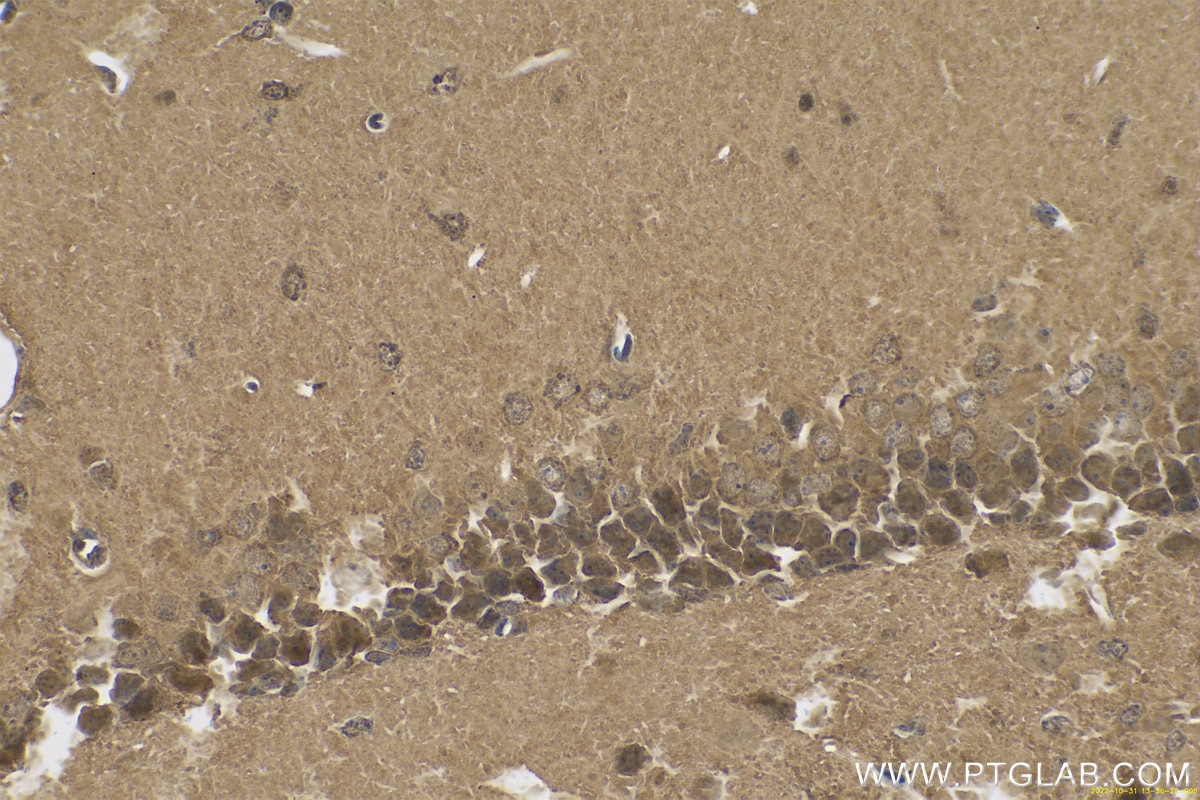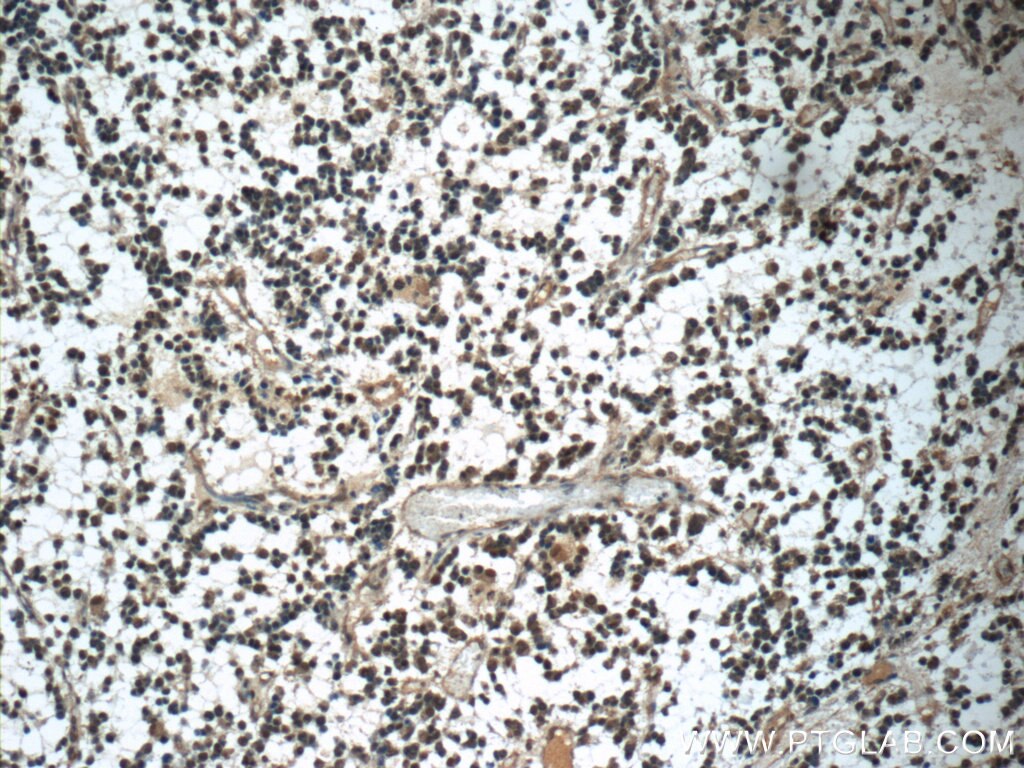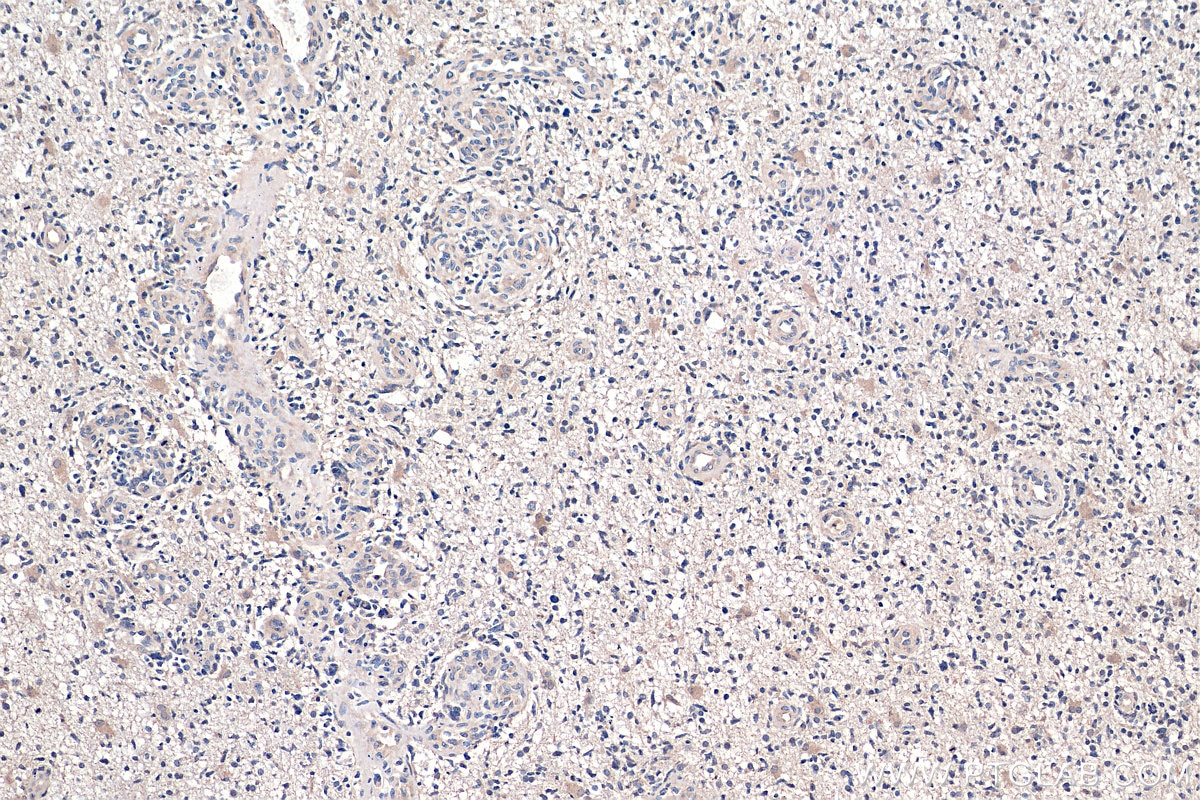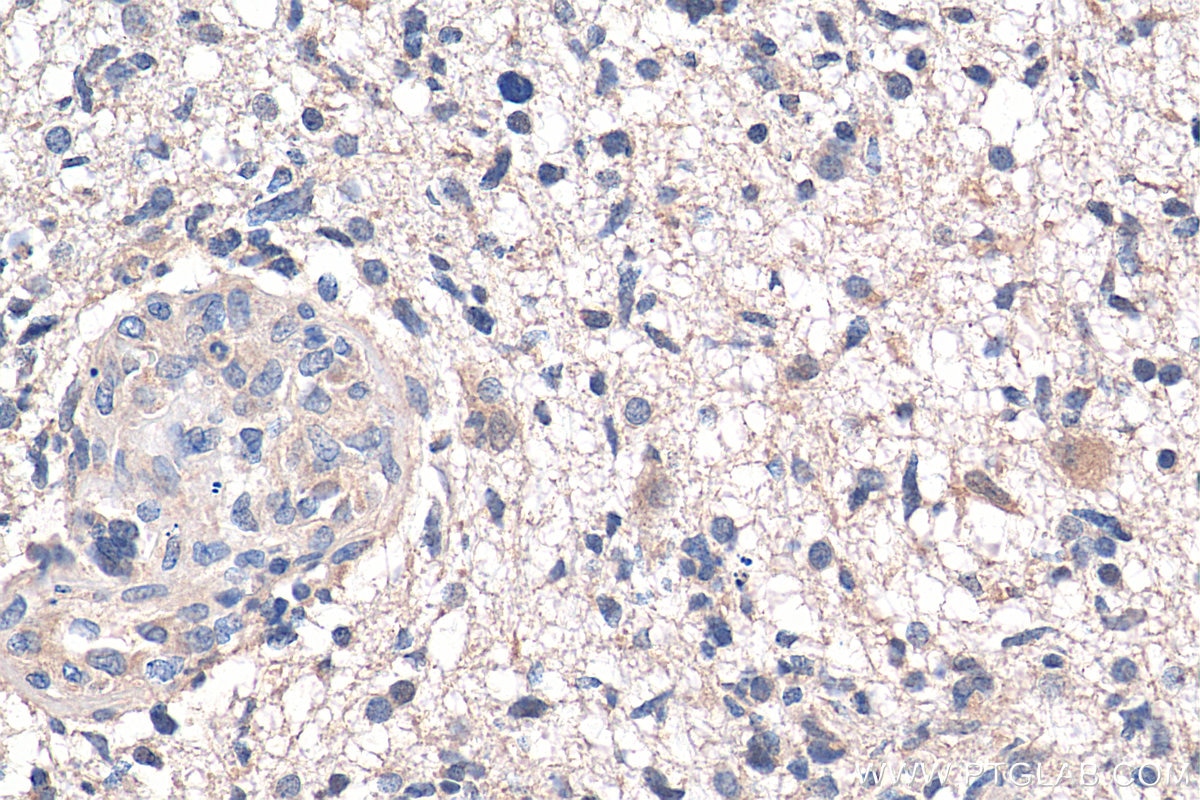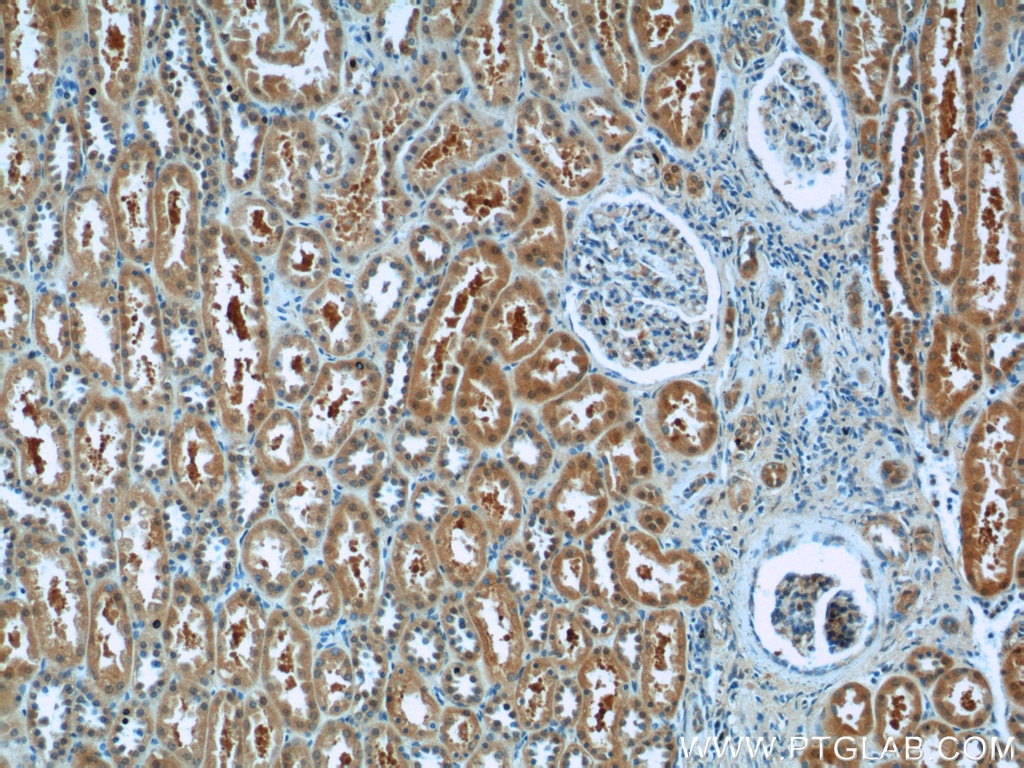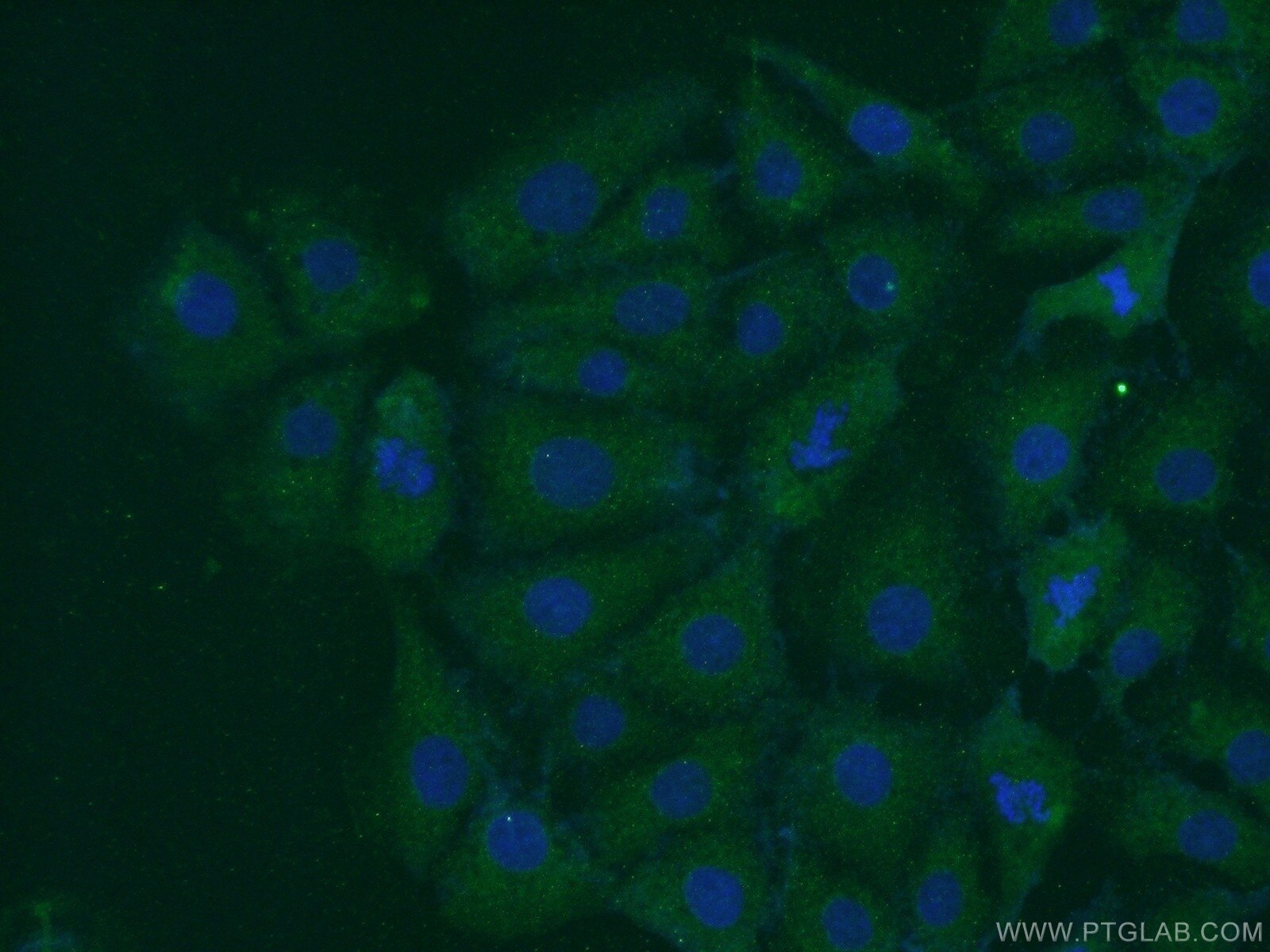- Phare
- Validé par KD/KO
Anticorps Polyclonal de lapin anti-PARK7/DJ-1
PARK7/DJ-1 Polyclonal Antibody for WB, IP, IF, IHC, ELISA
Hôte / Isotype
Lapin / IgG
Réactivité testée
Humain, rat, souris
Applications
WB, IHC, IF/ICC, IP, ELISA
Conjugaison
Non conjugué
N° de cat : 11681-1-AP
Synonymes
Galerie de données de validation
Applications testées
| Résultats positifs en WB | cellules HeLa, cellules HEK-293, cellules Jurkat |
| Résultats positifs en IP | cellules HeLa |
| Résultats positifs en IHC | tissu de gliome humain, tissu cérébral de rat, tissu cérébral de souris, tissu de cancer du foie humain, tissu hépatique de rat, tissu rénal de rat, tissu rénal de souris, tissu rénal humain il est suggéré de démasquer l'antigène avec un tampon de TE buffer pH 9.0; (*) À défaut, 'le démasquage de l'antigène peut être 'effectué avec un tampon citrate pH 6,0. |
| Résultats positifs en IF/ICC | cellules SH-SY5Y |
Dilution recommandée
| Application | Dilution |
|---|---|
| Western Blot (WB) | WB : 1:500-1:2000 |
| Immunoprécipitation (IP) | IP : 0.5-4.0 ug for 1.0-3.0 mg of total protein lysate |
| Immunohistochimie (IHC) | IHC : 1:1000-1:4000 |
| Immunofluorescence (IF)/ICC | IF/ICC : 1:20-1:200 |
| It is recommended that this reagent should be titrated in each testing system to obtain optimal results. | |
| Sample-dependent, check data in validation data gallery | |
Applications publiées
| KD/KO | See 3 publications below |
| WB | See 14 publications below |
| IHC | See 2 publications below |
| IF | See 3 publications below |
| IP | See 1 publications below |
Informations sur le produit
11681-1-AP cible PARK7/DJ-1 dans les applications de WB, IHC, IF/ICC, IP, ELISA et montre une réactivité avec des échantillons Humain, rat, souris
| Réactivité | Humain, rat, souris |
| Réactivité citée | rat, Humain, souris |
| Hôte / Isotype | Lapin / IgG |
| Clonalité | Polyclonal |
| Type | Anticorps |
| Immunogène | PARK7/DJ-1 Protéine recombinante Ag2287 |
| Nom complet | Parkinson disease (autosomal recessive, early onset) 7 |
| Masse moléculaire calculée | 189 aa, 20 kDa |
| Poids moléculaire observé | 20 kDa, 25 kDa |
| Numéro d’acquisition GenBank | BC008188 |
| Symbole du gène | PARK7 |
| Identification du gène (NCBI) | 11315 |
| Conjugaison | Non conjugué |
| Forme | Liquide |
| Méthode de purification | Purification par affinité contre l'antigène |
| Tampon de stockage | PBS avec azoture de sodium à 0,02 % et glycérol à 50 % pH 7,3 |
| Conditions de stockage | Stocker à -20°C. Stable pendant un an après l'expédition. L'aliquotage n'est pas nécessaire pour le stockage à -20oC Les 20ul contiennent 0,1% de BSA. |
Informations générales
PARK7, also named as DJ1, belongs to the peptidase C56 family. It protects cells against oxidative stress and cell death. PARK7 plays a role in regulating expression or stability of the mitochondrial uncoupling proteins SLC25A14 and SLC25A27 in dopaminergic neurons of the substantia nigra pars compacta and attenuates the oxidative stress induced by calcium entry into the neurons via L-type channels during pacemaking. It eliminates hydrogen peroxide and protects cells against hydrogen peroxide-induced cell death. PARK7 has cell-growth promoting activity and transforming activity. It may function as a redox-sensitive chaperone. It's precursor undergoes a cleavage of a C-terminal peptide and subsequent activation of protease activity in response to oxidative stress. The amino acid replace at 166 (L → P) reduces PARK7 protein stability and leads to increased degradation. The predicted MW of this protein is 20 kDa, An additional 25 kDa band can be observed due to modification (PMID: 31767755).
Protocole
| Product Specific Protocols | |
|---|---|
| WB protocol for PARK7/DJ-1 antibody 11681-1-AP | Download protocol |
| IHC protocol for PARK7/DJ-1 antibody 11681-1-AP | Download protocol |
| IF protocol for PARK7/DJ-1 antibody 11681-1-AP | Download protocol |
| IP protocol for PARK7/DJ-1 antibody 11681-1-AP | Download protocol |
| Standard Protocols | |
|---|---|
| Click here to view our Standard Protocols |
Publications
| Species | Application | Title |
|---|---|---|
Nat Chem Biol Chemical proteomics reveals new targets of cysteine sulfinic acid reductase. | ||
Nat Commun Disuse-associated loss of the protease LONP1 in muscle impairs mitochondrial function and causes reduced skeletal muscle mass and strength.
| ||
Mol Cell Proteomics Chemoproteomics Reveals Chemical Diversity and Dynamics of 4-Oxo-2-nonenal Modifications in Cells. | ||
Mol Cell Biol ROS-mediated DJ-1 monomerization modulates intracellular trafficking involving Karyopherin β2. | ||
J Cell Mol Med FKBP3 aggravates the malignant phenotype of diffuse large B-cell lymphoma by PARK7-mediated activation of Wnt/β-catenin signalling |
Avis
The reviews below have been submitted by verified Proteintech customers who received an incentive forproviding their feedback.
FH X (Verified Customer) (07-11-2022) | A very good and clean antibody with the right molecular weight for WB.
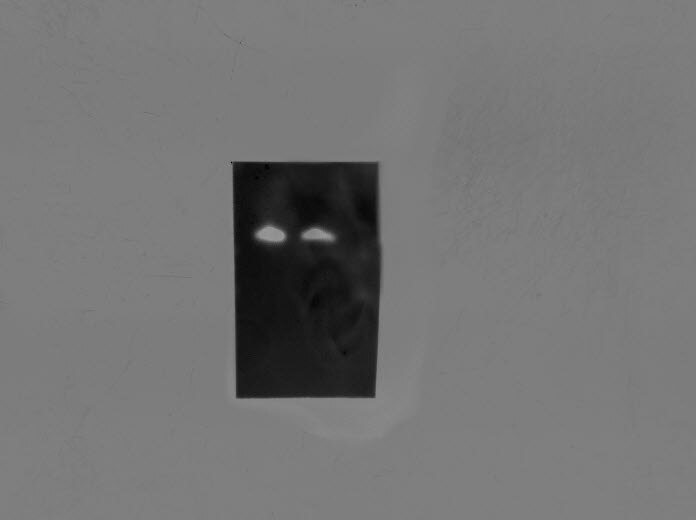 |
FH Daniel (Verified Customer) (04-16-2019) | Specific band in RCC4 cells
 |
